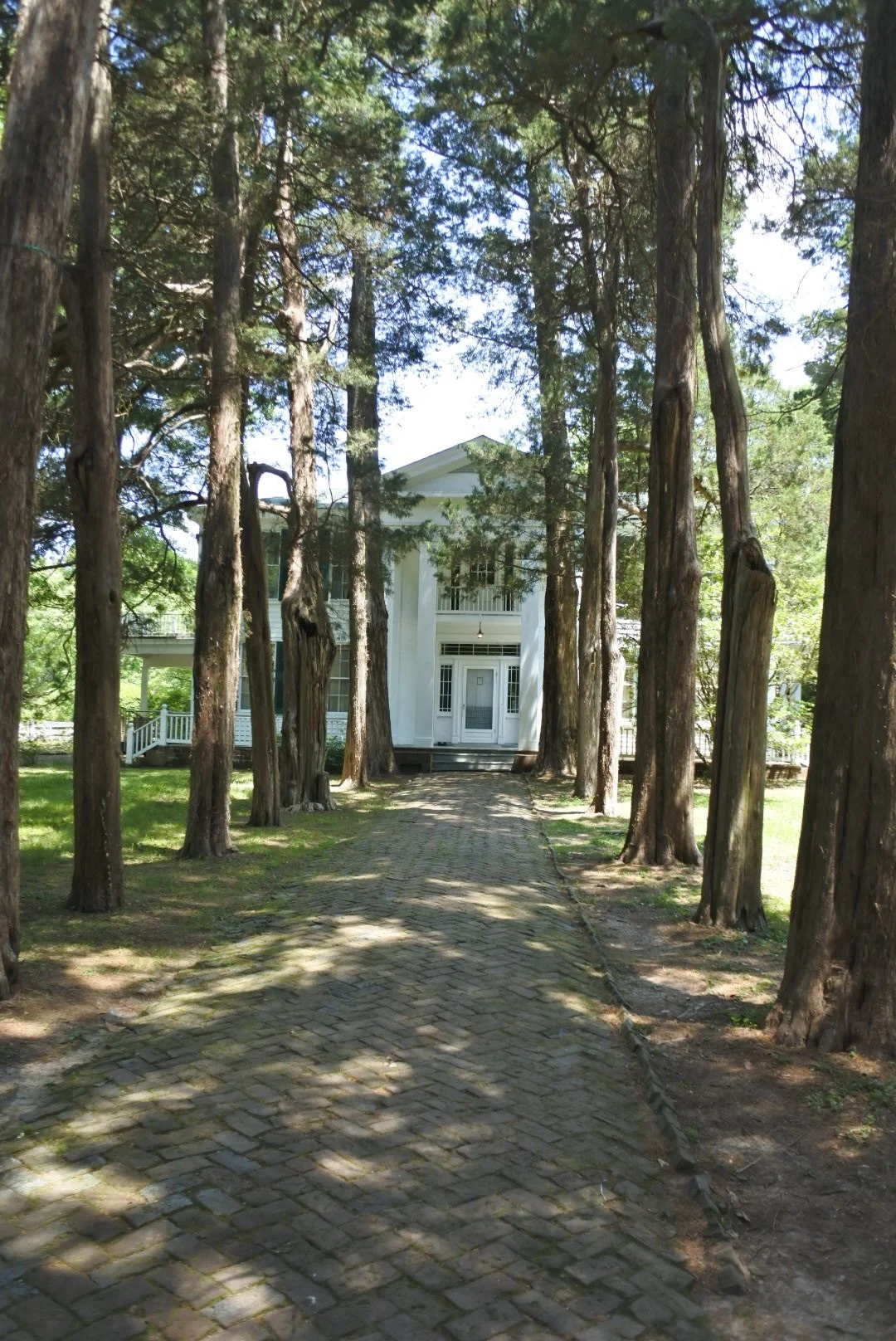"The past is never dead. It's not even past."
- William Faulkner, Requiem for a Nun
a trip to oxford
Earlier this summer, I spend some time in Memphis and took a quick little trip down to Oxford, Mississippi.
We were there for a couple of reasons, but chiefly to visit Rowan Oak, the home of writer William Faulkner. Faulkner has long been one of my favorite authors, one of the few that I have reread over the years.
Located near downtown Oxford, Rowan Oak is as much a part of the surround Bailey's Woods as it is the town. It sits on the edge of the college town, slightly apart, one foot in, one without.
We had a fantastic tour hosted by Ole Miss Museum director Robert Saarnio as he relayed the history and context along with the life of Faulkner during his time at Rowan Oak.
rowan oak
Rowan Oak was built in 1844 and purchased by Faulkner in 1930 after acclaim for his novels The Sound and Fury and As I Lay Dying . His family lived there until Faulkner died in 1962. His most well-known writings are all set within a short distance from Oxford, many in his fictional Yoknapatawpha County. This house was not only where he composed these works, but it was also the center of that universe.
His study and typewriter, shown above, look out at the deep, tangled shadows of Bailey's Woods. The house is a quite nice Greek Revival, a sort of cliche of a Southern mansion, with tall, white columns echoing the vertical trunks of the tree-lined alley. The architecture is not that remarkable - it is one of the many models of such houses that reside ever-present in the minds of Southerners. The Greek Revival style is in that sense almost timeless in the South - it repeats itself even today in florid McMansions and gentleman farmer estates. Rowan Oak is beautiful for its setting amongst the trees and forest, a cool, white jewel under the shadowy trees. The interior is what you might expect - a series of discreet, bland rooms, although the walls of the study did stand-in for a storyboard for some of Faulkner's work.
creative space
Is there anything unique or different in this place that was such a muse for a great writer? Is there some quality or characteristic intrinsic in the architecture or place that proved so inspirational? What makes for such a creative environment? These are great questions that I can't answer with certainty. I do know that creativity requires a place set a bit apart from reality. For some that is a retreat, a quiet, contemplative space where the imagination can roam freely without distractions. Others need stimulus overload, an pandemonium of images and sounds that can be sorted and combined into new forms and images.
For Faulkner, I think maybe he saw his occupation of Rowan Oak as just a part of a continuum of history. The house, like the woods and fields beyond, was his to occupy for a time, a landscape for dramas to take root and flourish. The land, and maybe the house as well, was timeless, to be temporarily filled up with the imagination, and then left to its own.
timely and timelessness
Rowan Oak is beautiful and surprisingly relaxed, reposing sleepily in its woodsy embrace. It is certainly timeless now, preserved to Faulkner's era, his typewriter and furnishings now fixed in place, a museum and shrine. Like so many places, the curators are struggling to come to terms with Rowan Oak's history of slavery and what that occupation means to us today. The house and grounds may not change, but our understanding of the human dramas that played out there most likely will continuously evolve.







